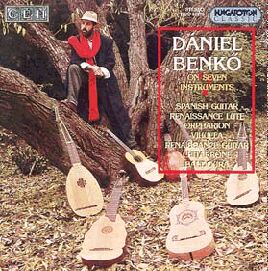
| Artist: | Benkö Dániel |
| Title: | Hét hangszeren - On Seven Instruments |
| Released: | 1992 |
| Label: | Hungaroton Classics |
| Time: | 55:16 |
| Producer(s): | |
| Appears with: | |
| Category: | Classic |
| Rating: | ******.... (6/10) |
| Media type: | CD |
| Purchase date: | 1999.05.14 |
| Price in €: | 7,63 |
| Web address: | www.hungaroton.hu |